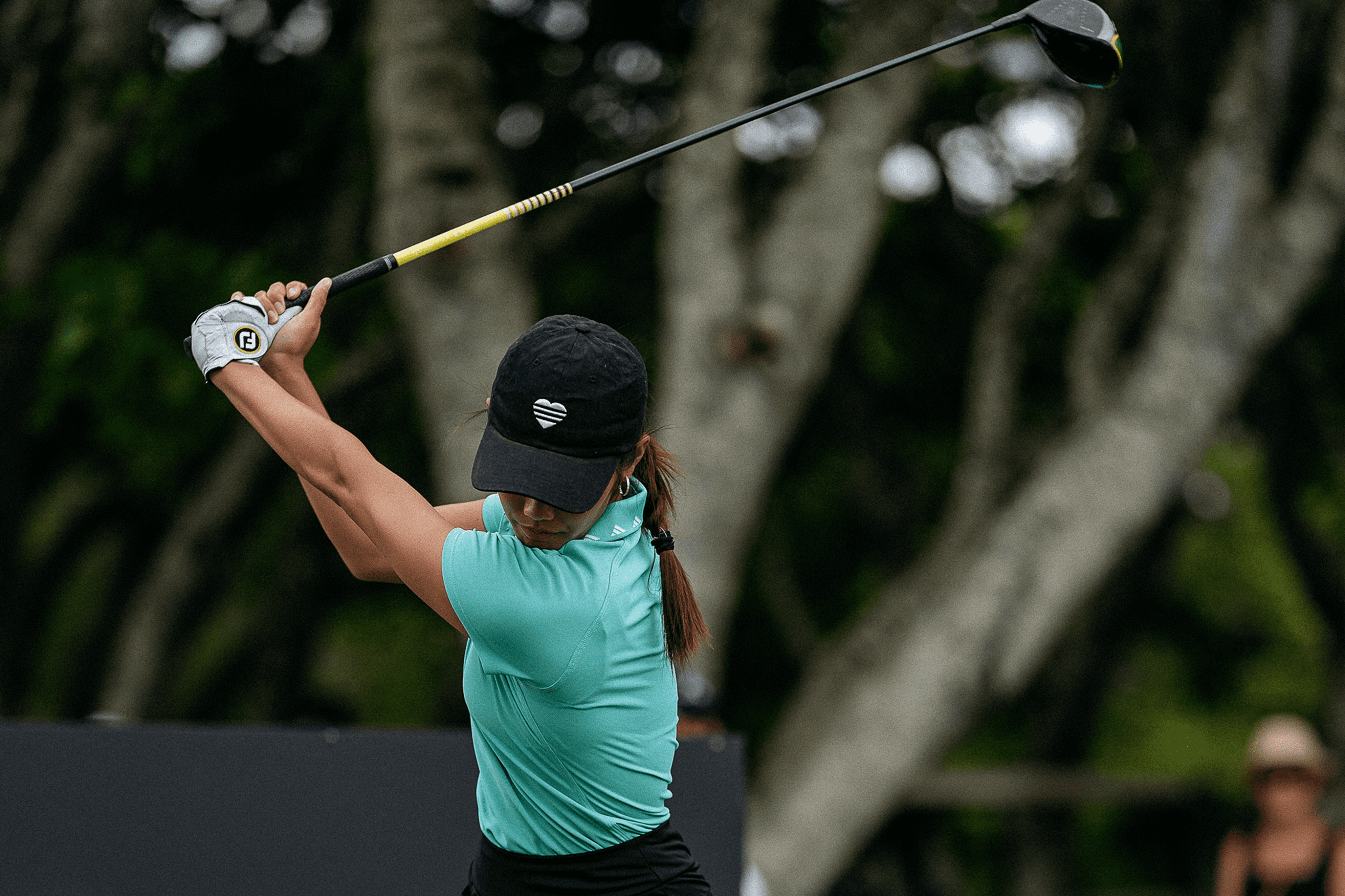CATEGORIES
- Latest News
- Interviews
- Golf Travel
- Features
- Juniors
- Competition
- Events
- Health
- Equipment
- Fashion
- Archive
INFORMATION
CURRENT ISSUE

SUBSCRIPTIONS



By Trish Daly
I remember as a young girl thinking I would never play golf. As an unwilling caddy for my father, I hated the game. It was just SO boring
and seemed to be a sport only old people should play.
But as with all hockey players, I eventually slowed down and was hampered by recurring injuries. A friend suggested I try golf and within a short space of time I was hooked, addicted, and doing everything I could to improve my game.
However, I soon discovered an interesting thing about golf – unlike many other sports, as much as you practice and work on your game, it doesn’t necessarily translate into improved performance.
Why is this? My belief is we don’t fully understand how the golf swing works and therefore we work on and practice the wrong things. Please bear with me while I explain.
For years I didn’t fully understand the golf swing or how my body was meant to move during it. There seemed to be a mystique around the swing. Coaches tended to work on a particular component of the swing – never expounding on it as a whole.
I watched Tiger Woods on the TV and tried to emulate his swing as best I could.
The problem with this was that I had no understanding of what was behind Tiger’s powerful and effective swing. I didn’t grasp just how technical the golf swing is. Nor did I know that it places tremendous rotational forces on our spine – forces great enough to fracture vertebra and damage lumber discs, presenting huge potential for injury if we don’t know what we are doing.
I discovered all this when I met Katherine Roberts (Yoga for Golfers) at the World Golf Fitness Summit in New Orleans. Katherine helped me to see that how the body moves is fundamental to an effective golf swing – sounds obvious now as I write this, but it was like all my previous learning finally made sense.
Once we truly understand the biomechanics of the golf swing and the Kinematic Sequence at its heart, we will see a massive difference in our game and improved performance on the golf course.
Beyond this, our new understanding will allow us to train and grow our golfing muscles and can prevent golf related injuries.
It is the mechanism by which power is transferred to the golf ball when all the necessary body parts fire in exactly the right order to deliver maximum power that is then released to the club head at exactly the right moment.
The sequence begins with us grounding our feet at address, drawing energy up from the ground and loading our right leg in the backswing. Harnessing this energy, we then unload it by leading with the lower body. Next, we rotate the torso and finally, we release all this stored energy through our arms and out through the club head at impact.
A baseball batter generates and unleashes their power through a very similar Kinematic Sequence. They load the back foot, coiling and generating power using their lower body to deliver this stored energy to the bat when it connects with the ball.
When the sequence breaks down, swing faults occur, there is a leakage of power, and injuries can be sustained.
Examples of the swing sequence breaking down are when we sway or slide, and when we come over the top in the swing.

Another cause of swing breakdown is using the wrong body parts to perform tasks. An example of this is when we try to rotate our lumber spine instead of our thoracic spine. Our lumbar spine is found between the sacrum and the thoracic or chest region of the spine .The role of the lumbar spine is to stabilise our pelvis. Using it to achieve rotation can cause lower back pain – which reduces both the pleasure we get from our golf and the amount of time we can spend on the course.
It is amazing how understanding the Kinematic Sequence (Golf’s Golden Gift) and learning to apply it can benefit us golfers in so many ways.
The same principles apply in other sports. Yesterday at the beach I watched as a swimmer tried to do butterfly. It was painful to watch: he made little progress and I shuddered to think of the damage he was causing his back and neck and how exhausting he must have found it. Yet I know that if the swimmer had an understanding of the stroke and made a few biomechanical tweaks, his stroke would have been so much easier and more efficient.
As with golf, it doesn’t take a myriad of lessons but rather a basic knowledge and understanding of the biomechanics (the why) and then their application (the how) to improve your performance and avoid injury.
Once we fully understand the components of the Kinematic Sequence, we can train the muscles it uses to execute the golf swing.
For example, understanding what is needed as we stand to address the golf ball. This is the only time both our gluteals are firing together; at all other times, they fire independently. So we need to train them for this task.
Our hips are among the most important joints in the golf swing and limited hip mobility will inhibit our ability to turn in the backswing and downswing.
Understanding precisely the roles of the muscles and joints we need in our swing can motivate us to work on them – and that training means we will see results on the golf course – and spend less time off the course because of muscle soreness or injury.
During that training, any restrictions or mobility issues the golfer may have will become evident and can be addressed and moderated.
It always encourages me when I talk to a new golfer and ask how long they have been playing. I love to meet someone who is keen and enjoying their golf yet has a hunger to play even better and is not buying into the belief they need to be playing for x number of years and have x number of lessons before they can become a really good player.
Nonsense! Show the golfer the whole swing and introduce them to the biomechanics behind it. Explain how their body needs to move to create a great Kinematic Sequence. Teach them how to train the muscles they need to use.
And then watch them soar!
© All rights Reserved. Trish Daly, July 2021.
Photo credit: Kurtogram